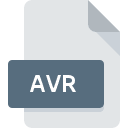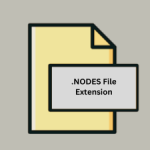.SSEQ File Extension

Nintendo DS Sound Sequence File
| Developer | Nintendo |
| Popularity | |
| Category | Audio Files |
| Format | .SSEQ |
| Cross Platform | Update Soon |
What is an SSEQ file?
.SSEQ file extension, typically associated with the Nintendo DS Sound Sequence files, represents a specific data format used primarily in the gaming industry.
These files are integral to the Nintendo DS gaming console, providing a structured way to handle the game’s audio sequences.
Essentially, .SSEQ files are used to store sequence data for music tracks and sound effects, which are played back by the console’s sound engine during gameplay.
More Information.
The purpose of .SSEQ files were to provide a compact, efficient format for storing sound sequences in Nintendo DS games.
Given the limited storage and processing power of handheld consoles at the time, the .SSEQ format was optimized to maintain audio quality while ensuring the files were not excessively large.
It allowed game developers to integrate complex audio sequences into their games, enhancing the gaming experience without compromising performance.
Origin Of This File.
The .SSEQ file format was developed by Nintendo as part of the Nintendo DS’s sound system. The Nintendo DS, launched in 2004, was a groundbreaking dual-screen handheld gaming console, and its sound capabilities were a significant part of its appeal.
The .SSEQ files, along with other sound data files, were created to leverage the console’s sound hardware efficiently, allowing for high-quality audio playback without excessively burdening the console’s processing resources.
File Structure Technical Specification.
The .SSEQ file format is structured to be read by the Nintendo DS’s sound engine. It contains a series of instructions and data that dictate how the sound sequences are played.
These include note data (pitch, length, velocity), tempo settings, and references to instrument samples, which are typically stored in separate files (such as .SWAR or .SBNK files).
Technically, the .SSEQ file format is a form of MIDI data but with specific adaptations and optimizations for the Nintendo DS hardware.
It’s not a standard audio file like an MP3 or WAV; instead, it’s more akin to a set of instructions that tell the DS’s sound chip how to generate the audio in real time.
How to Convert the File?
Converting .SSEQ files to more widely recognized audio formats involve a multi-step process because .SSEQ files are not standard audio files but rather sequences of instructions for audio playback.
Here’s how you can convert .SSEQ files to formats like .WAV or .MP3:
Extract the .SSEQ File:
- If you’re working with a Nintendo DS ROM, you’ll first need to extract the .SSEQ file along with its associated .SWAR (wave archive) or .SBNK (sound bank) files. This can be done using tools like NitroExplorer or Tinke.
Convert .SSEQ to MIDI:
- Use VGMTrans, a powerful tool for converting game music files. It can convert .SSEQ files into MIDI (.mid) and SoundFont (.sf2) files. The MIDI file contains the note data, while the SoundFont file contains the instrument samples.
- Run VGMTrans, open the .SSEQ file, and then export the file to MIDI format. Ensure you also save the associated .SWAR or .SBNK files as .sf2 files.
Convert MIDI to WAV/MP3:
- Once you have the MIDI file, you can use any standard audio conversion tool to convert the MIDI to WAV, MP3, or another common audio format. Remember that you’ll need a SoundFont player to properly render the MIDI with the instruments defined in the .SSEQ file.
- Tools like SynthFont can play MIDI files using SoundFonts (.sf2 files). Open the MIDI in SynthFont, load the converted .sf2 file when prompted for a SoundFont, and then render the audio to WAV or MP3.
Fine-Tuning:
- The conversion might not be perfect, especially if the .SSEQ file uses intricate sound programming. You might need to adjust volumes, panning, or even instrument mappings in the SoundFont to achieve a more accurate rendition.
Advantages And Disadvantages.
Advantages:
- Efficiency: .SSEQ files are highly optimized for the Nintendo DS hardware, ensuring smooth playback without taxing the device’s CPU or memory too much.
- Quality: Despite their small size, .SSEQ files can produce high-quality audio, making them ideal for the handheld gaming environment.
- Flexibility: The format supports a wide range of musical features, including multiple channels, polyphony, and complex sound effects.
Disadvantages:
- Compatibility: .SSEQ files are designed specifically for the Nintendo DS sound system, meaning they are not natively supported on other platforms or devices.
- Complexity: Creating or editing .SSEQ files require specialized knowledge and tools, which can be a barrier for non-technical users or indie game developers.
How to Open SSEQ?
Open In Windows
VGMTrans: This is the most popular tool for dealing with .SSEQ files. VGMTrans can open .SSEQ files, play them, and convert them to MIDI and SoundFont files. Here’s how:
- Download and open VGMTrans.
- Drag and drop the .SSEQ file into the VGMTrans window.
- The program should display the file and allow you to play it. You can also export it to MIDI and SoundFont for further manipulation.
Open In Linux
1. VGMTrans with Wine: Linux doesn’t have a native .SSEQ player, but you can use Wine to run Windows applications. Follow these steps:
- Install Wine on your Linux distribution.
- Download the Windows version of VGMTrans.
- Run VGMTrans using Wine and open the .SSEQ file as you would in Windows.
2. Audio Overload: It’s a cross-platform music player that can handle various game music formats, including some .SSEQ files. Install Audio Overload and open the .SSEQ file with it.
Open In MAC
1. Audio Overload: This software is also available for macOS and can play a variety of video game music formats.
- Download and install Audio Overload.
- Open the .SSEQ file with Audio Overload to listen to it.
2. VGMTrans with Wine or CrossOver: Use Wine or CrossOver to run the Windows version of VGMTrans on macOS.
Open In Android
Opening .SSEQ files on Android are not straightforward since there are no direct applications for handling .SSEQ files.
You can convert .SSEQ files to a more compatible format (like MIDI) on your computer and then transfer and play the MIDI files on your Android device using any standard MIDI player.
Open In IOS
Similar to Android, iOS does not support .SSEQ files natively. Convert the .SSEQ files to a universally playable format (like MP3 or WAV) on your computer first. After conversion, you can transfer and play the audio files on your iOS device using any media player.













